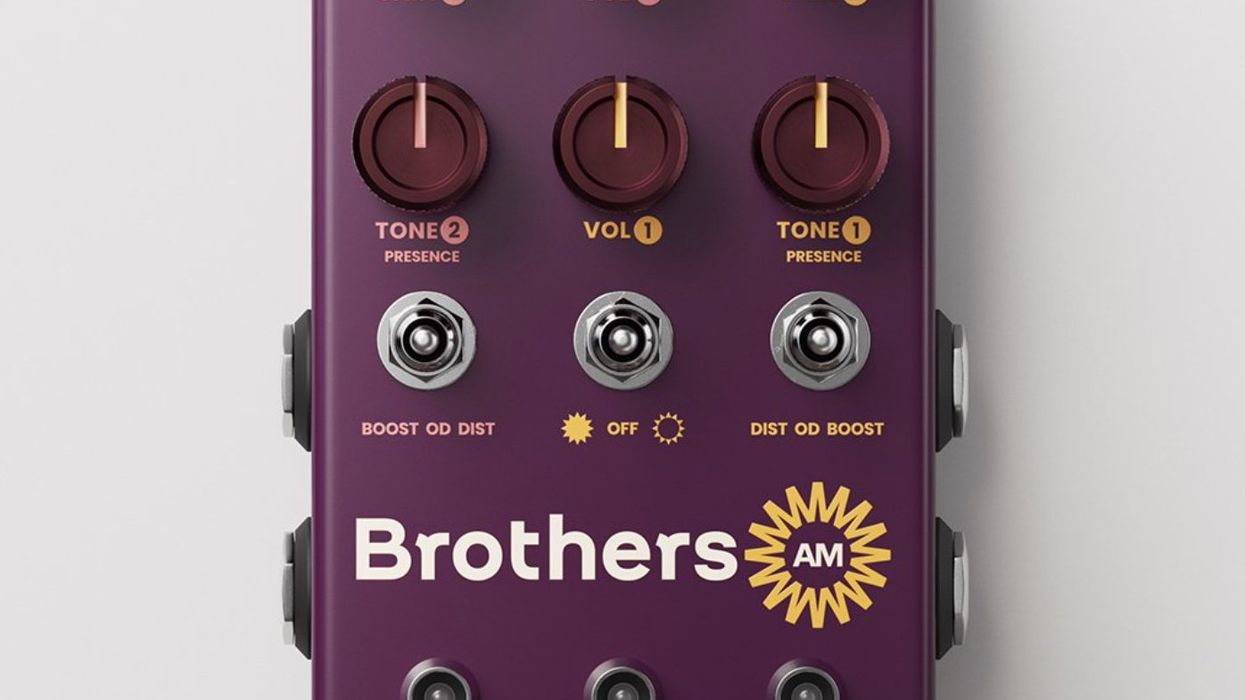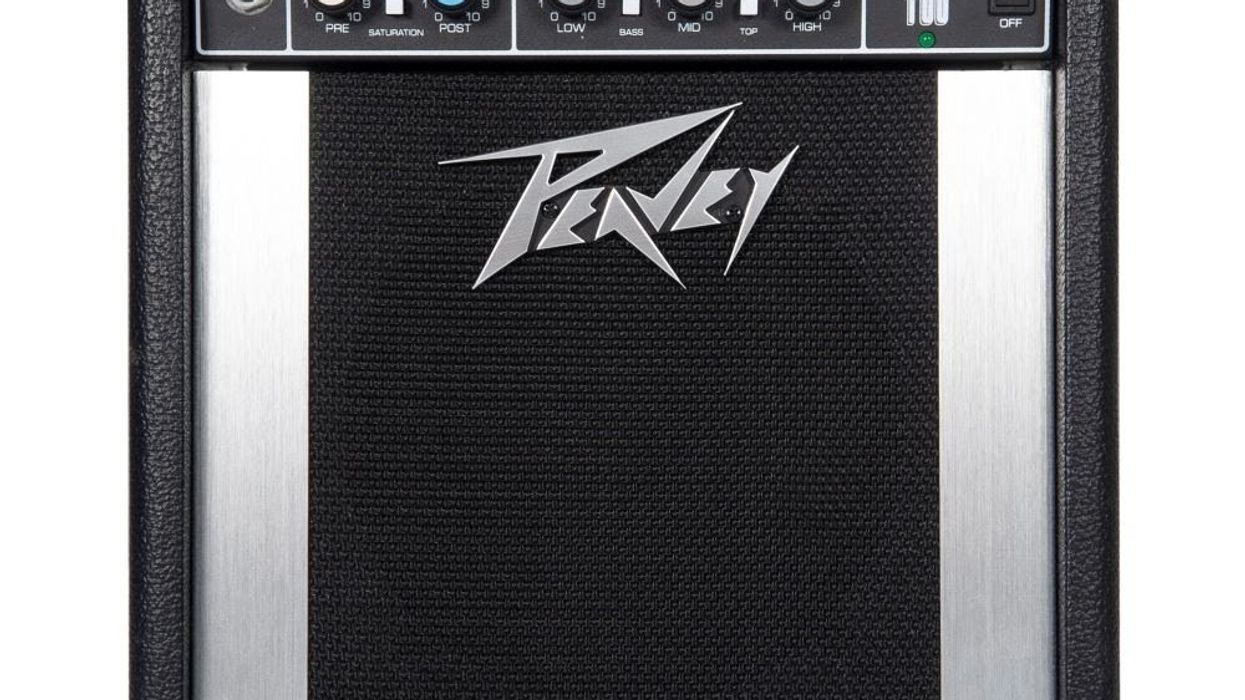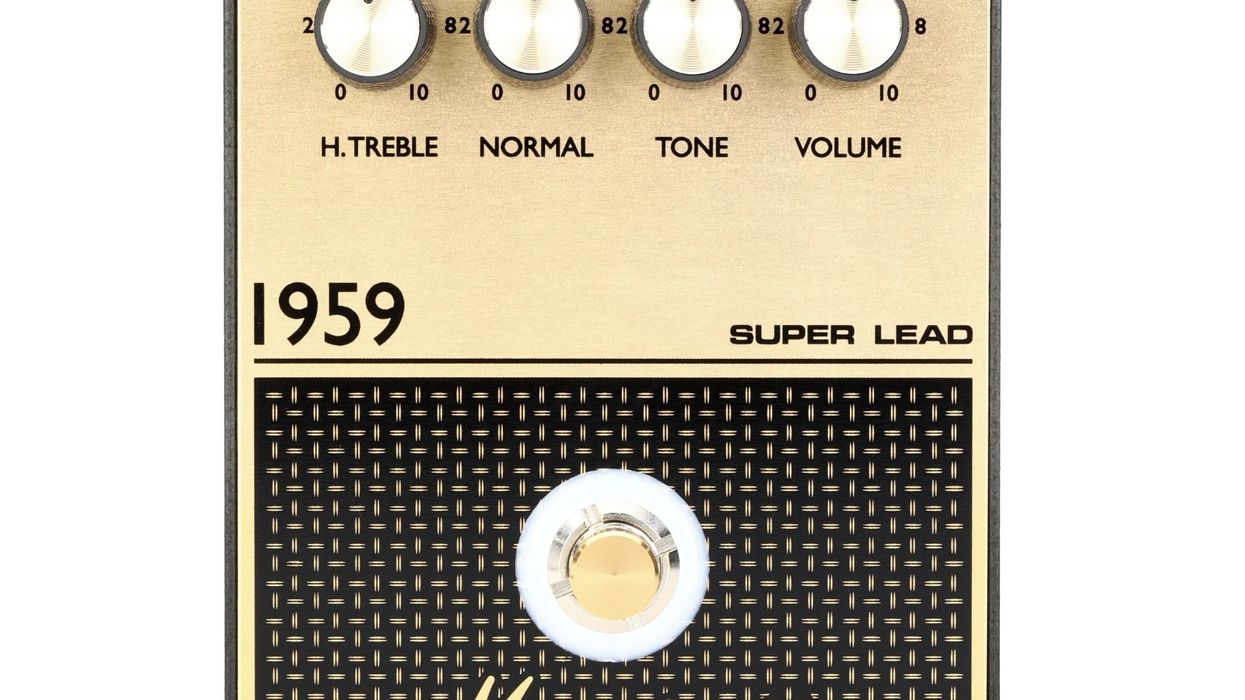Dustin Kensrue and Teppei Teranishi (above right) of Thrice have a hectic schedule of relentless touring. Luckily, PG’s Perry Bean was able to meet up with the band before their latest Nashville stop at the Cannery Ballroom.

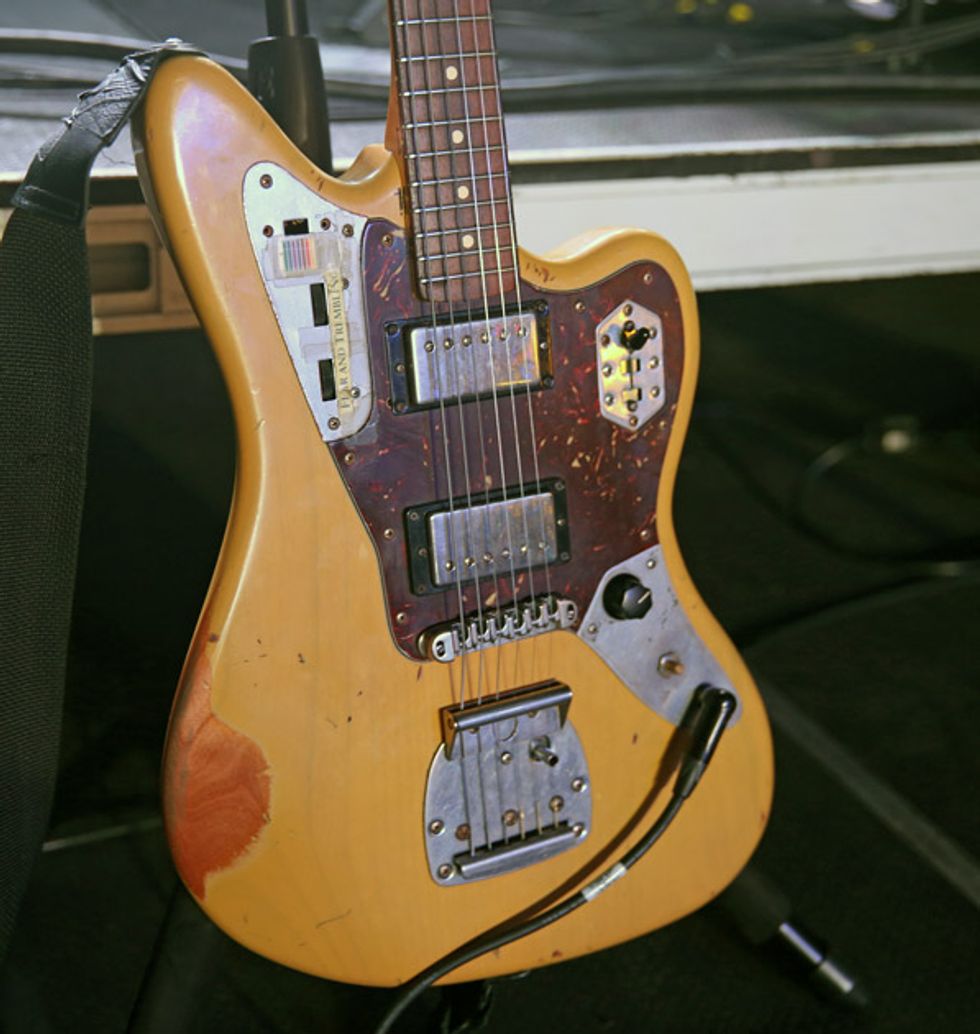
A big part of the Thrice sound comes down to the way Teppei Teranishi and Dustin Kensrue find their own distinct tone. Kensrue has been getting a lot of mileage out of this Nash JM-63 that’s loaded with a Lollar High Wind Imperial Humbucker in the bridge and a Lollar El Rayo Humbucker in the neck. He strings it up with Ernie Ball Cobalt strings (.011–.056). The custom set features these string gauges: .011, .014, .018, .032, .044, .056.
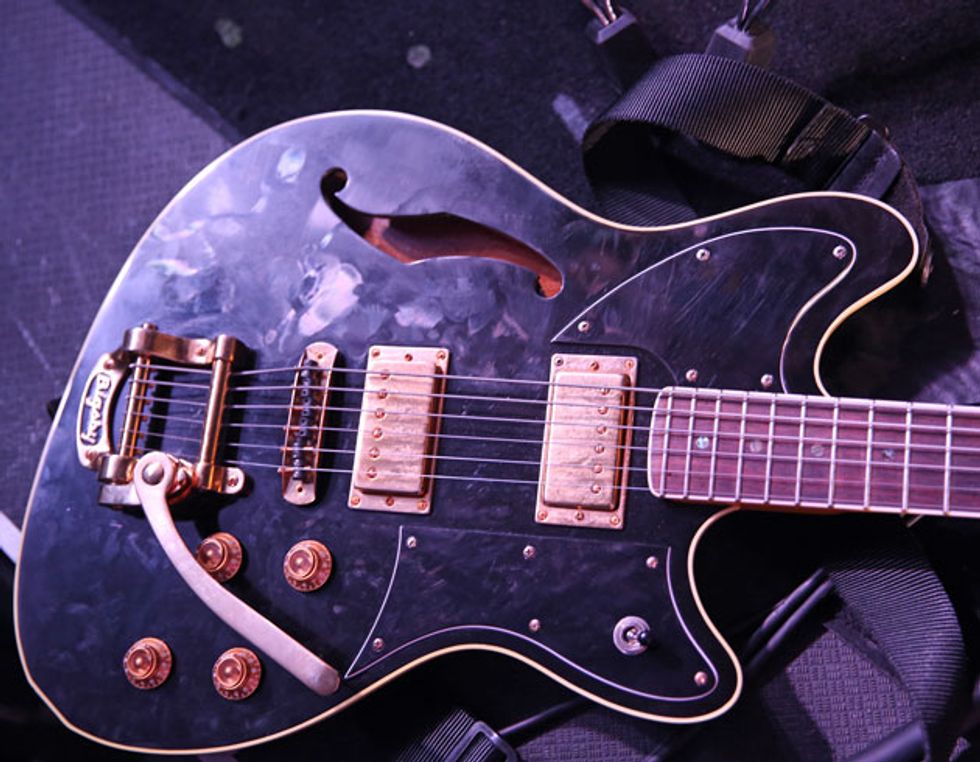
Kensrue also goes with this Cave and Canary Baritone Solaris that’s equipped with a Bigsby and strung up with Ernie Ball Cobalt strings (.011–.068).
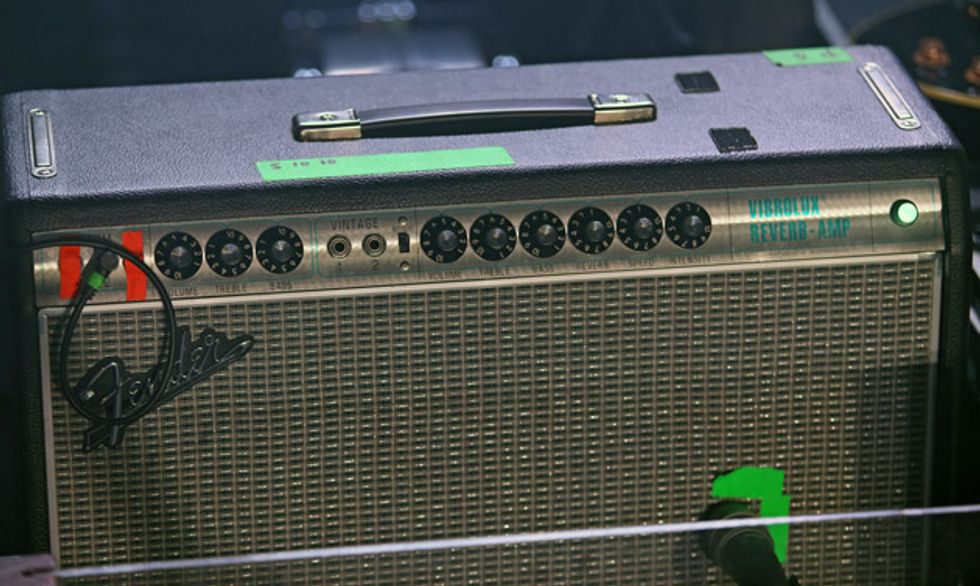
Dustin favors a two-amp setup. This Fender ’68 Custom Vibrolux lives behind a baffle to help control volume.
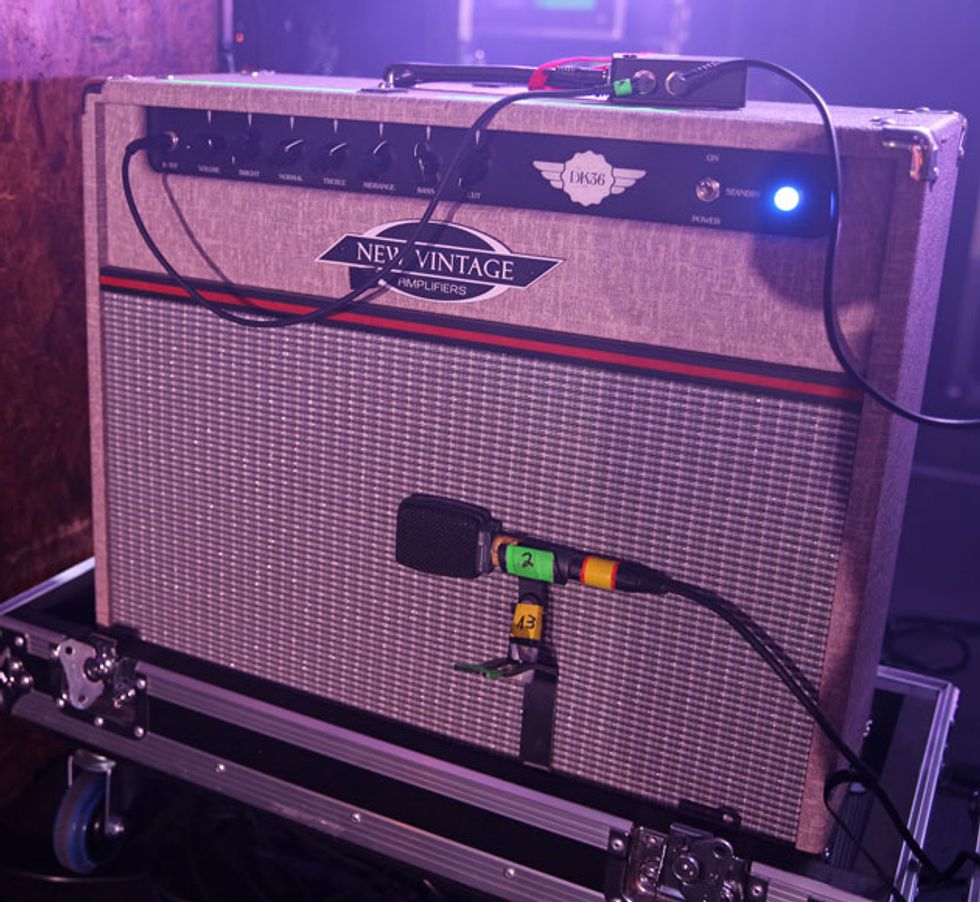
He combines the Vibrolux with a New Vintage Amps Custom DK36 that was modded by Nic Patullo from New Vintage.

The control center of Kensrue’s Pedaltrain Classic Pro is an FAMC Liquid Foot+ Mini, which works with a pair of Voodoo Lab Hex units to switch between pedals. The choices available are plentiful and include a trio of Strymon pedals (a TimeLine, a Mobius, and a BigSky), JHS Mini Foot and Muffuletta fuzzes, a Walrus Audio Deep Six, a Line 6 M5, an Electro-Harmonix POG2, and a pair of custom Mojo Hand Fx “Kensrue” Rook overdrives. A TC Electronic PolyTune 2 Noir aids with tuning.
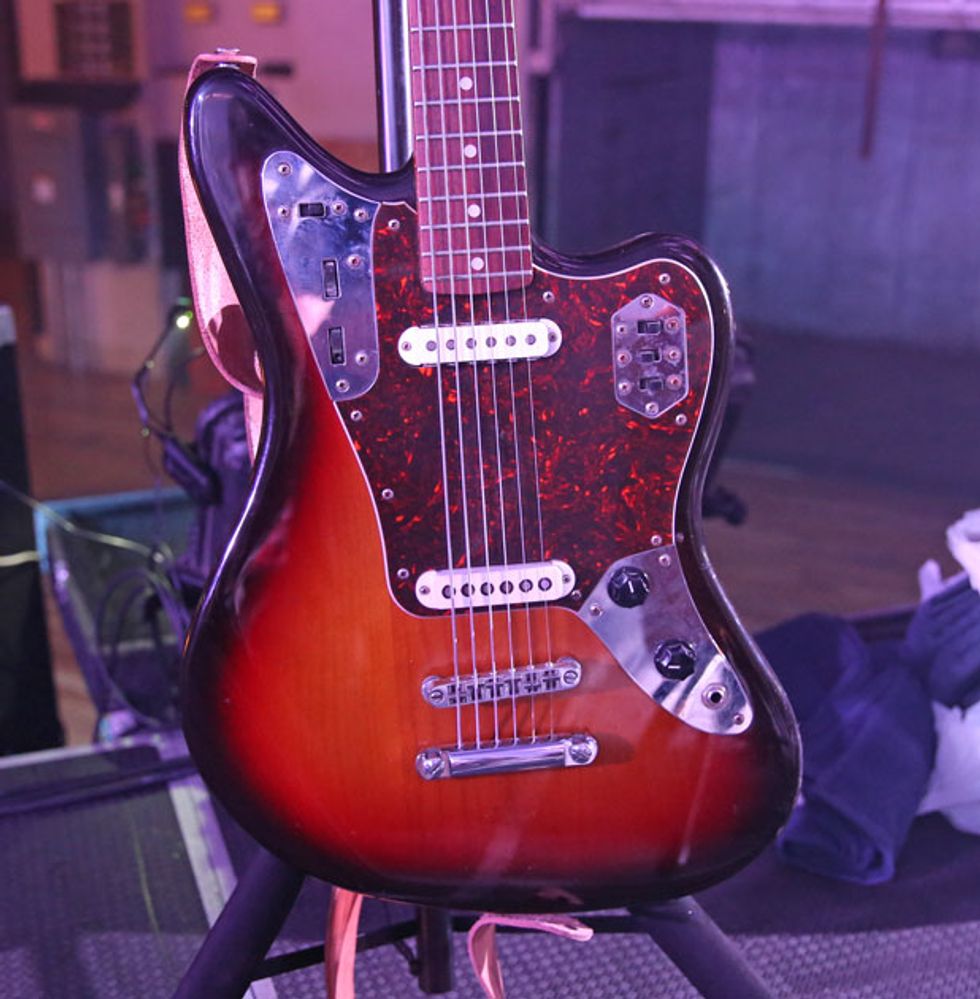
Teppei Teranishi likes it low and rumbly with this Fender Baritone Custom Jaguar (which was renamed the Jaguar Bass VI Custom in 2006).

This 1972 Gibson Les Paul Standard—bought off eBay—was Teppei’s first real guitar he got when first starting out in the band. The guitar originally came with DiMarzio Super Distortions, but at some point Teranishi put in a Seymour Duncan JB in the bridge.
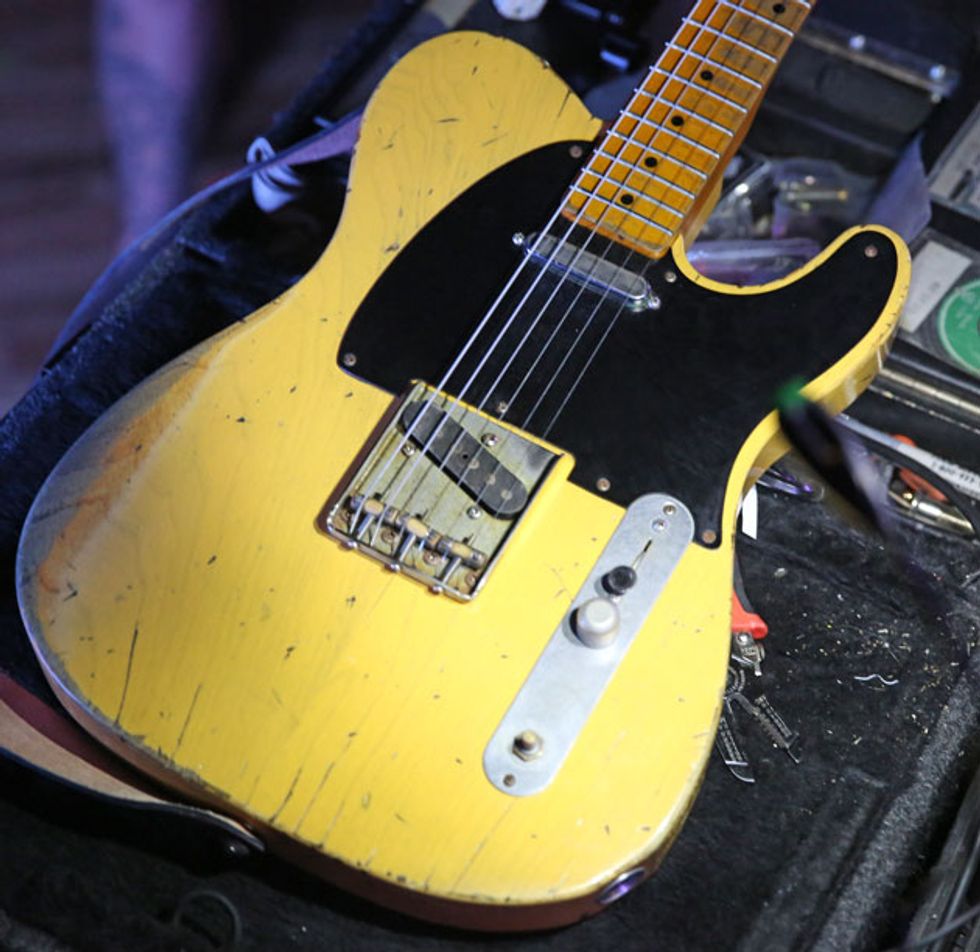
Teranishi’s 2004 Nash T-style guitar is strung up with Ernie Ball strings (.011–.054).
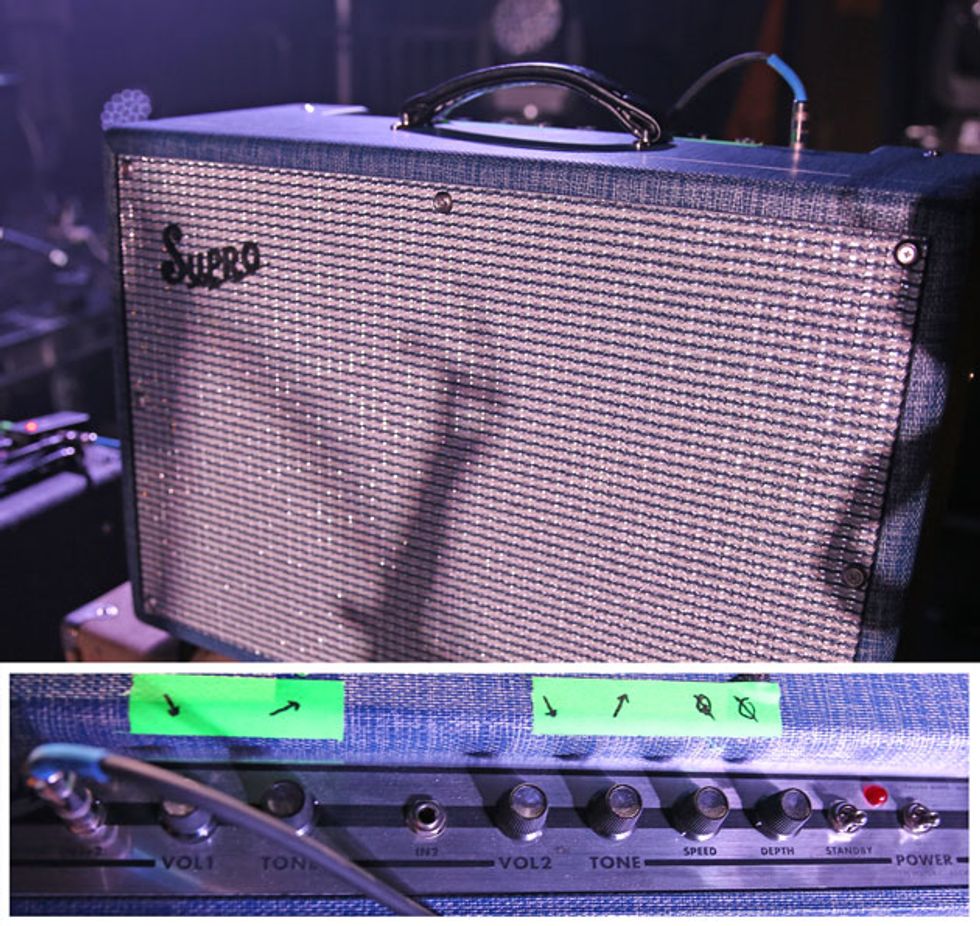
This Supro Dual Tone is only part of Teranishi’s dual-amp setup and rests comfortably atop a blonde Fender Bassman 2x12 cab loaded with Celestion Vintage 30s.
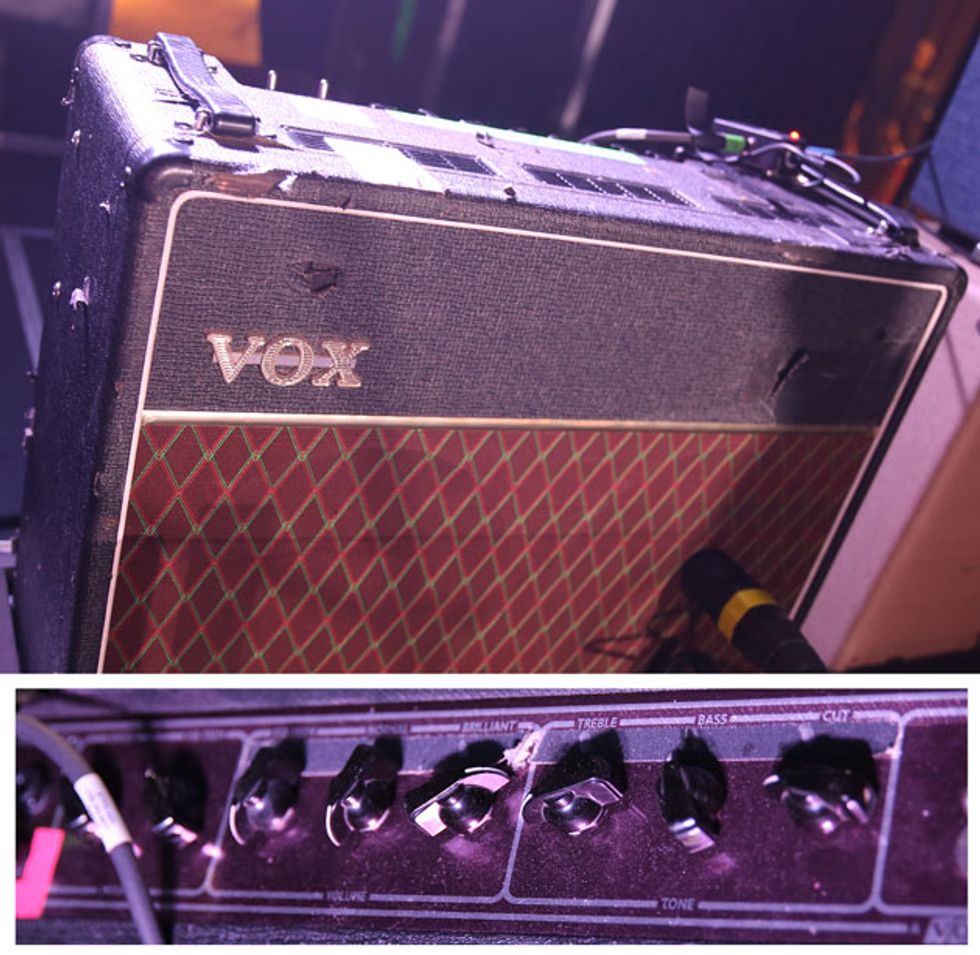
A rather young, but well worn, Vox AC30 sits alongside the Supro/Fender setup to add some British chime.
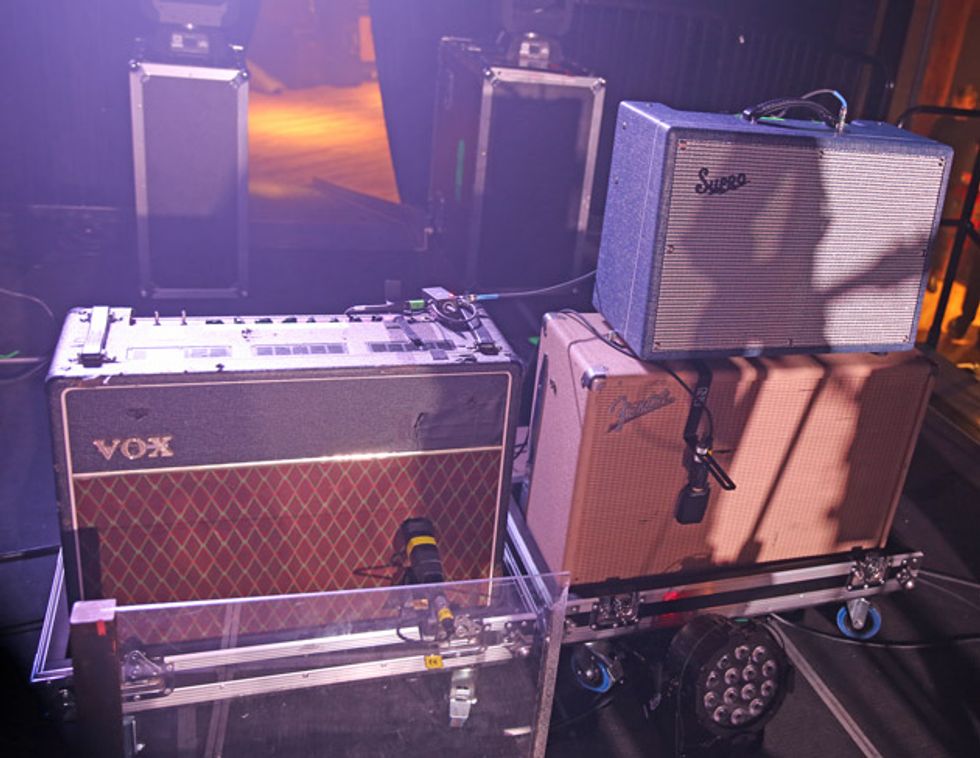
A full shot of Teppei's dual-amp setup.
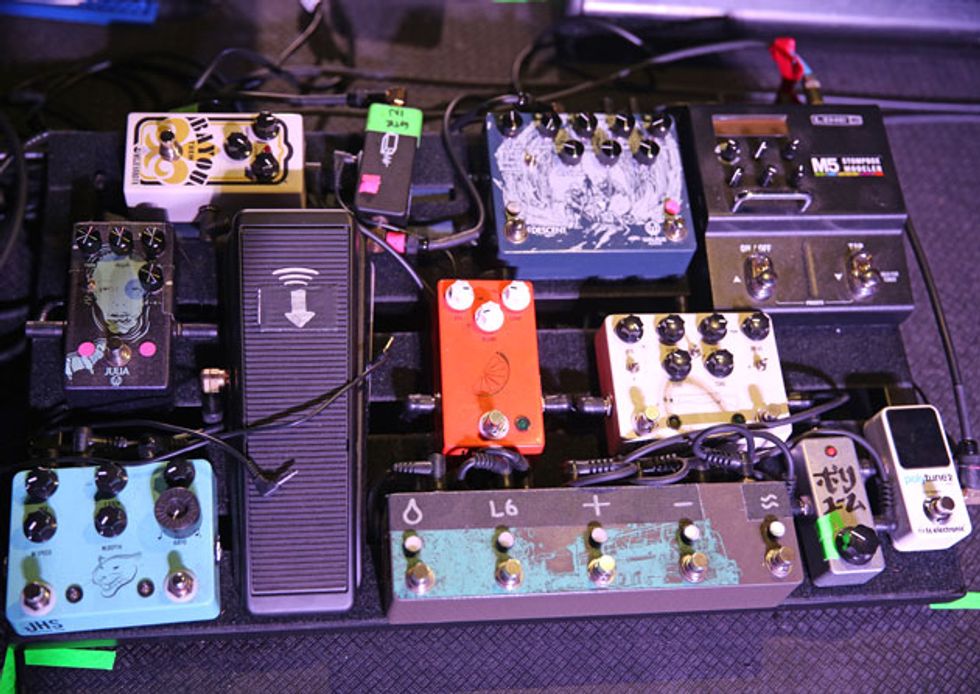
Teranishi’s Pedaltrain board is stocked with a variety of tone-shaping tools. He rocks a few JHS pedals (a Double Barrel, a Pulp ’N’ Peel, and a Panther Cub), Walrus Audio gear (Descent and Julia pedals, as well as an Aetos power supply and Transit 5 switcher), a Line 6 M5, and a Mojo Hand Fx Bayou. A TC Electronic PolyTune 2 Mini is used for tuning, and a Mission Engineering continuous controller governs various Walrus Descent parameters.
Click to subscribe to our monthly Rig Rundown podcast:


